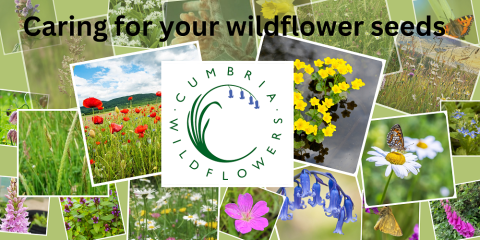Why Winter Isn't the Best Time for Sowing Wildflower Seeds: A Guide to Successful Gardening
When it comes to nurturing a vibrant garden, timing is everything. As winter settles in, many gardening enthusiasts might be itching to sow wildflower seeds and transform their outdoor spaces into colourful havens. While the enthusiasm is commendable, it's crucial to understand that not all seasons are conducive to this process, especially winter. In this article, we delve into the reasons why winter isn't the ideal time for sowing wildflower seeds, with a focus on the significance of proper ground preparation and the perfect springtime sowing. Additionally, we explore the essential steps for storing wildflower seeds to ensure their freshness and viability for up to a year.
**1. Understanding Winter's Challenges:
Winter poses several challenges for wildflower seeds. The cold and often wet weather can hinder germination of many native seeds. Some need warmer soil temp. to breakdown dormancy. Furthermore, frost heaves could push seeds to the surface, disrupting their growth processes, if the soil is bare there is a risk of leaving them on the surface and desiccating, also some areas at risk of flooding during the winter your sown seeds could float away. If you have sown over the winter, ensure the area is weed free.
**2. Preparation is Key:
For successful wildflower germination n, the ground and soil need careful preparation. This includes clearing the area of weeds and debris, loosening the soil to create a seed bed, loose soil to aid root growth and ensure good drainage to prevent water logging. These steps are best undertaken in the late summer/early autumn or early spring, ensuring the soil is in optimal condition for sowing.
**3. Timing Matters:
The arrival of spring brings milder temperatures and longer daylight hours, creating the perfect environment for wildflowers to thrive. Sowing seeds in spring allows them to take advantage of the warming soil and increased sunlight, promoting healthy germination and robust growth. However if you have yellow rattle in the seed mix we recommend sowing late summer/autumn.
**4. Proper Seed Storage:
For those eager to get a head start, purchasing wildflower seeds in winter is a common practice. However, it's essential to store these seeds correctly to maintain their viability. Store seeds in a cool, dark, and dry area. Ideally, place them in a breathable bag (paper or mesh type), protecting them from moisture and light. These conditions help retain the freshness of the seeds, ensuring their shelf life for over 12 months.
In conclusion, while the winter months might test the patience of gardeners, they also offer a valuable planning period. Use this time wisely to prepare your garden beds and gather the knowledge needed for successful wildflower cultivation. When spring arrives, armed with properly stored seeds and a well-prepared garden, you'll be ready to sow the seeds of a blooming paradise, ensuring a vibrant and colourful garden that will be the envy of the neighbourhood.
When you subscribe to the blog, we will send you an e-mail when there are new updates on the site so you wouldn't miss them.



Comments